Cherries have a long and juicy history in Paris, going right back to the Ancient Roman era. After conquering the future City of Light in 52BC, those high-living Romans imported fancy new architecture, customs, fashions and food. Markets began to sell luscious orchard fruits, with cherries — which the Romans had brought back from Asia Minor several decades earlier — being a top pick, among the bounty of pears, peaches, grapes and figs.
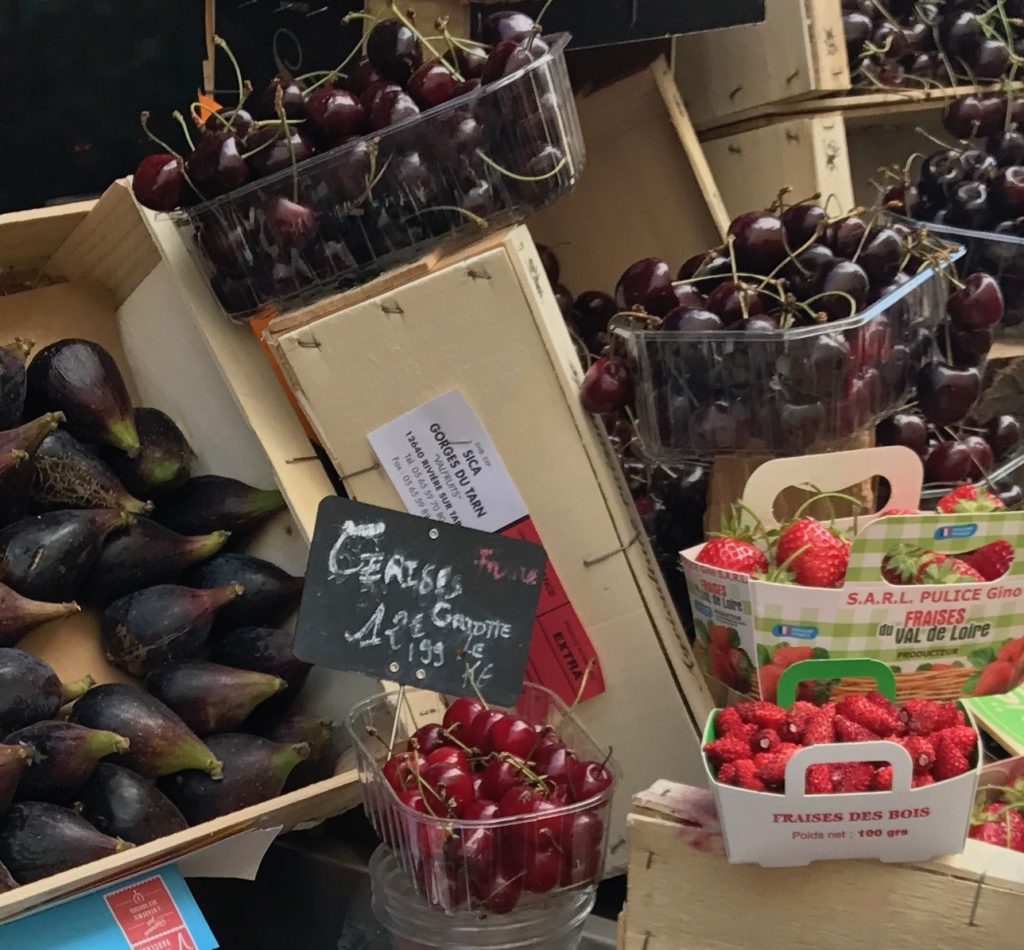
The beloved heart-shaped fruit was still on the menu in medieval times, as a street in the Lower Marais proves; Rue de la Cerisaie is named in memory of the cherry orchard of the fourteenth-century king Charles V. His estate, Hôtel Saint-Pol, was demolished long before the Turgot map (below — Rue de la Cerisaie is in the middle) was commenced in 1734, but you can still get a sense, from this snippet here, of what this part of Paris was like when much of it was covered in fruit gardens.
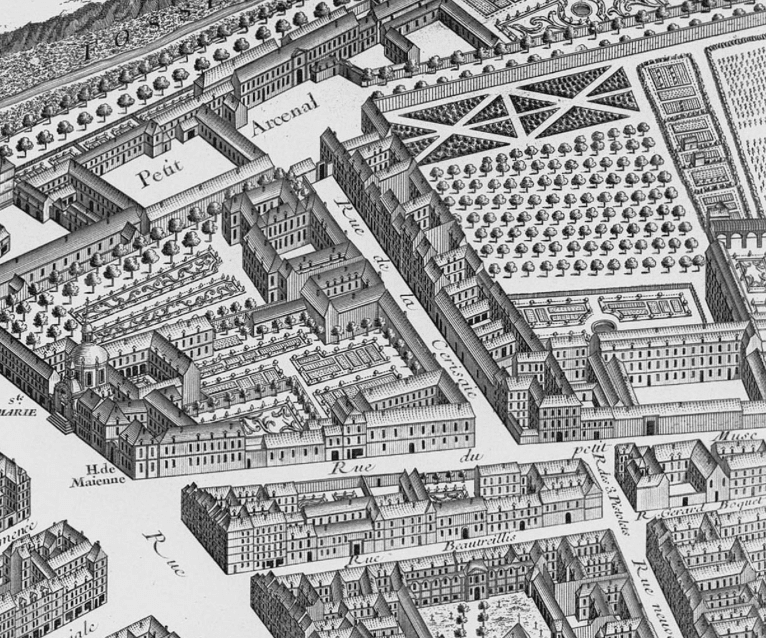
It was, incidentally, in this century that one of the all-time classics of French cooking was created: the flan-like pudding, cherry clafoutis:
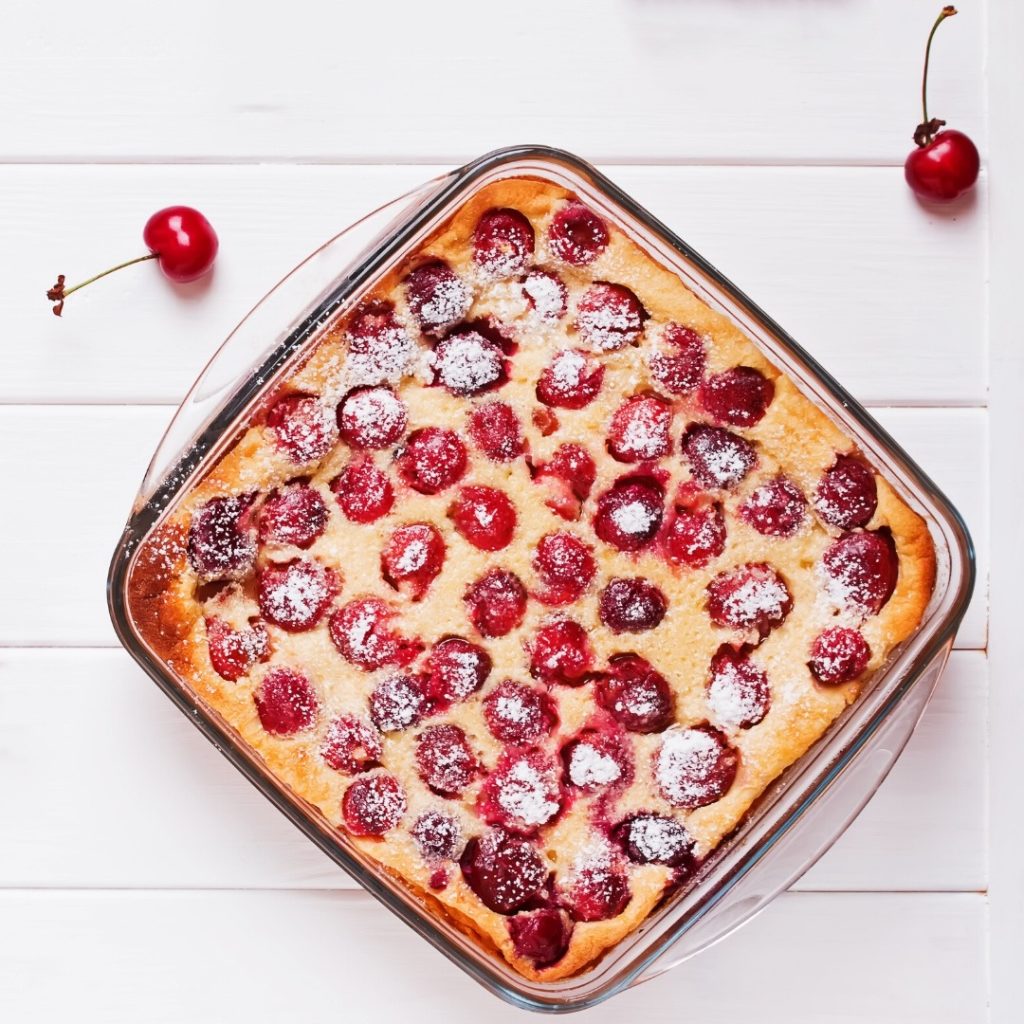
Cherries became big business during the following centuries. One of the most celebrated cherry regions was Montmorency, just to the north of Paris. The village has long since been consumed by Parisian urban sprawl, but its cherry trees, and fruit, can now be found in many other countries, having been a popular French export in the 1700s. Cherry trees were also much prized for their branches and trunks, cherry wood being a favourite of the likes of Madame de Pompadour and Marie Antoinette.
In the following century, after the Revolution, cherries became emblematic of the sweet life, of hope for a better future, in a country whose economy was still overwhelmingly dependent on agriculture.

‘Le Temps des Cerises’ (The Time of Cherries), the hit folk song of 1866, became all the more poignant when it was adopted at the unofficial theme anthem — a call for a better life — of the brief and bloody 1870 uprising known as the Commune. Such legendary French crooners as Yves Montand, Charles Trenet and Juliette Gréco, no less, have lent their voices to the much-loved bittersweet song.
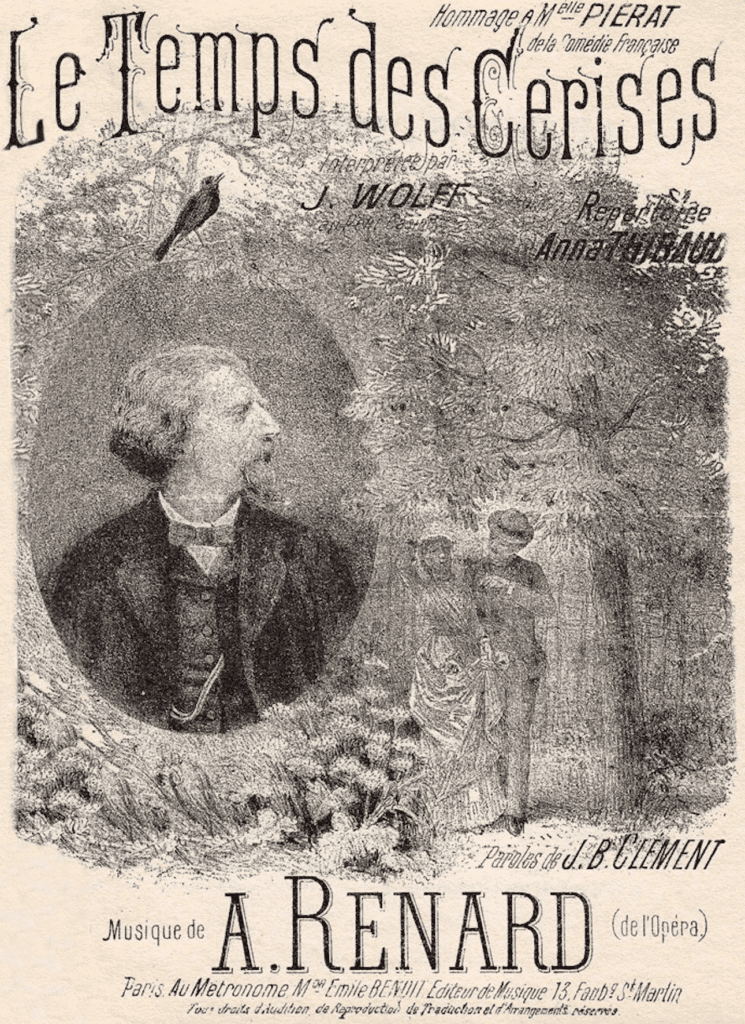
The expression le temps des cerises nowadays has a certain sense of nostalgia; it could be translated into ‘the good old days.’
Cherries still make Parisians smile, but for their flowers as much as the fruit. Over the past century, ornamental cherry trees have been planted around Paris, inspired by Japan’s cherry blossom season. Come April, they decorate this classic beige city with pretty pops of pink.

Read on for where you can feast on both the fruit and the flowers of the cherished cherry tree …
CHERRY BLOSSOMS
The most celebrated of Paris’s cherry blossoms (botanical name: prunus serrulata ‘Kanzan’) bloom in April, but you can delight in some early-flowering types from the beginning of March — a lovely morale boost in a month that is notoriously grey and rainy.

There are the cherry plums of the Champ de Mars, in the shadow of the Eiffel Tower (above), as well as an assortment of blossoms in the gorgeous courtyard garden of the Petit Palais.
If you find yourself in Paris in April, here’s where you can see the gorgeous Kwanzan cherry trees a-bloom in gorgeously ruffled pink blossoms:

Cathédrale Notre-Dame de Paris. There’s a heart-palpitatingly pretty grove of pink Kanzans on the southern side of the cathedral, although due to last year’s fire and the current restoration work, we’ll have to admire the trees’ blossoms from the opposite riverbanks for a few years.
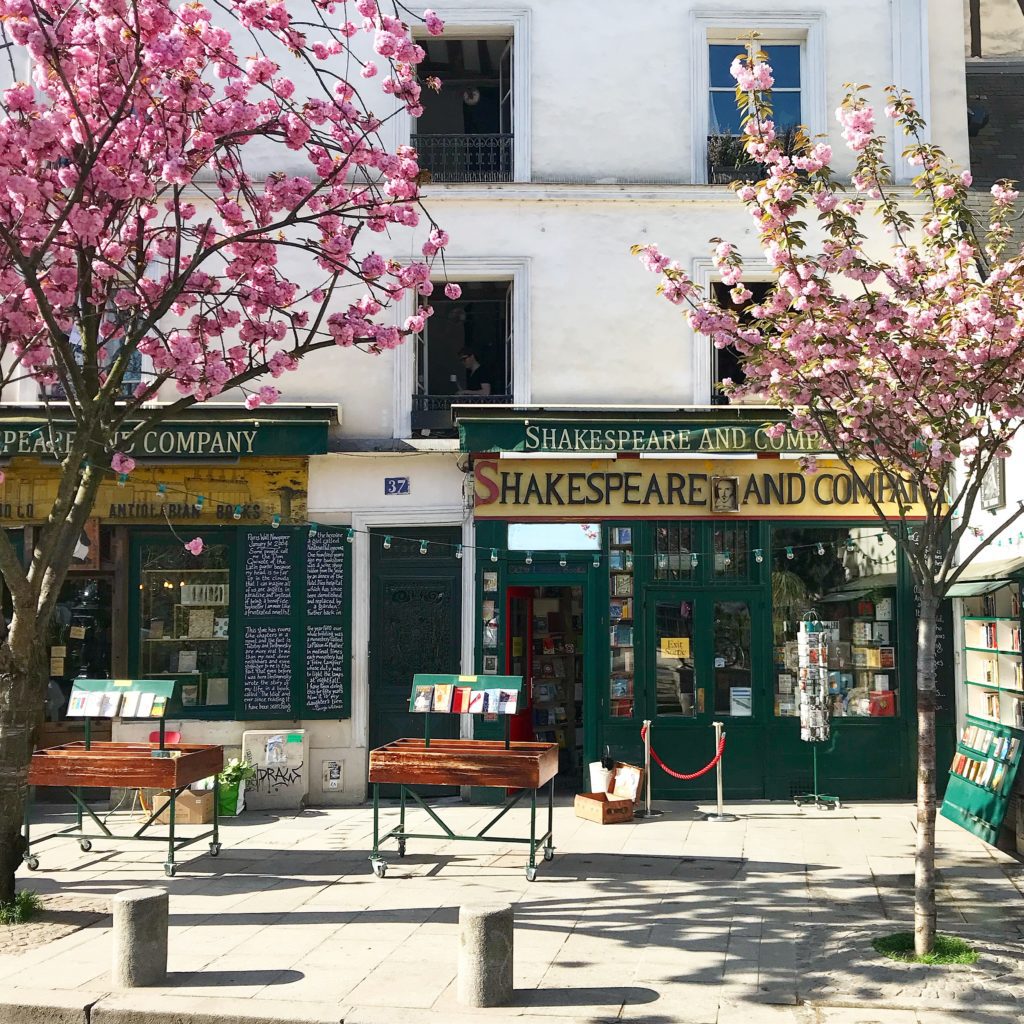
Shakespeare and Company (37 Rue de la Bûcherie, 75005). Two delightful cérisiers add an extra touch of whimsy to this historic corner of Paris.
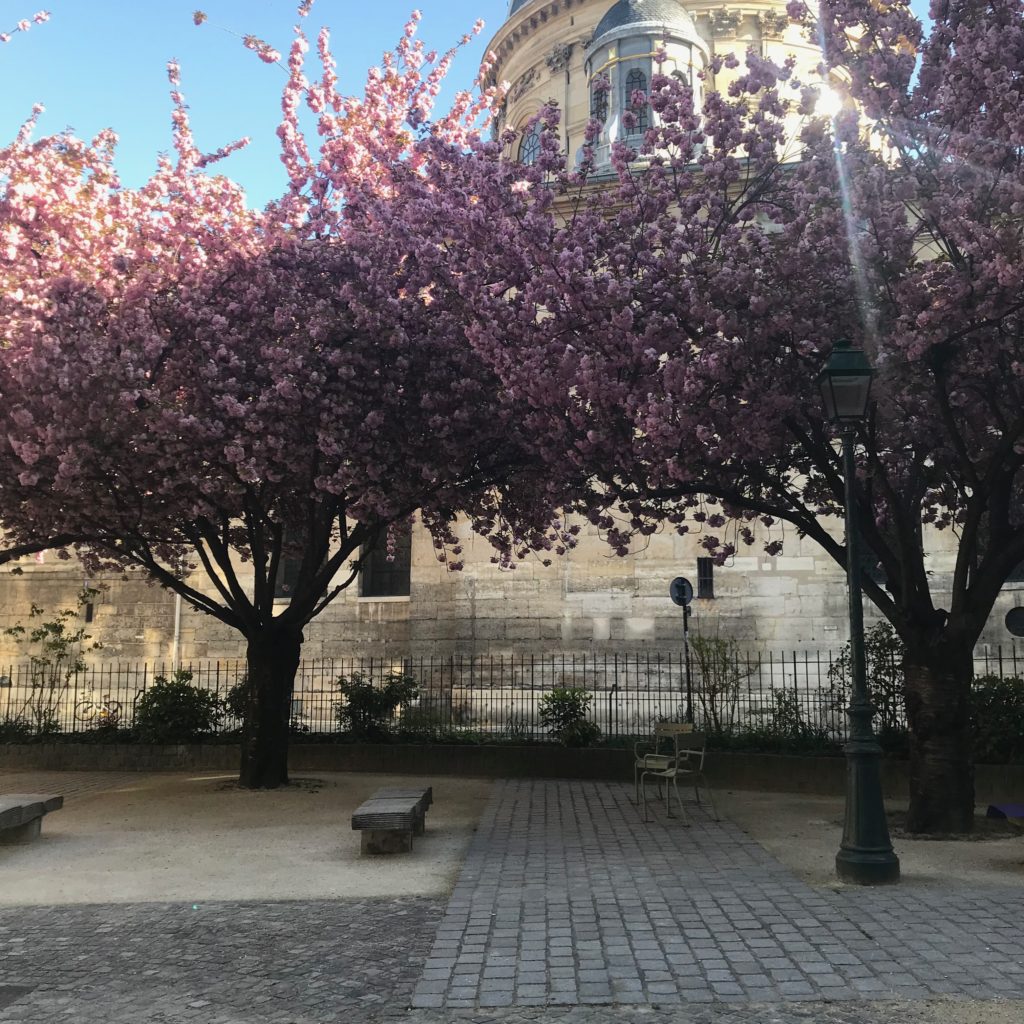
Square Gabriel Pierné (5 Rue de Seine, 75006). The cluster of cherry blossom trees, when in pink bloom, look spectacular beneath the gilded dome of the Institut de France.

Jardins du Trocadéro. Kanzan trees line the water basin in the gardens opposite just across the river from the Eiffel Tower — which makes for many stunning photo opps in the month of April.

Jardin des Plantes. You’d expect the city’s botanic garden to have some of the best cherry trees in Paris — and it sure does not disappoint. There are some lovely white blossom trees, but also one of the largest Kanzans around, and it simply takes the breath away when in glorious bloom.
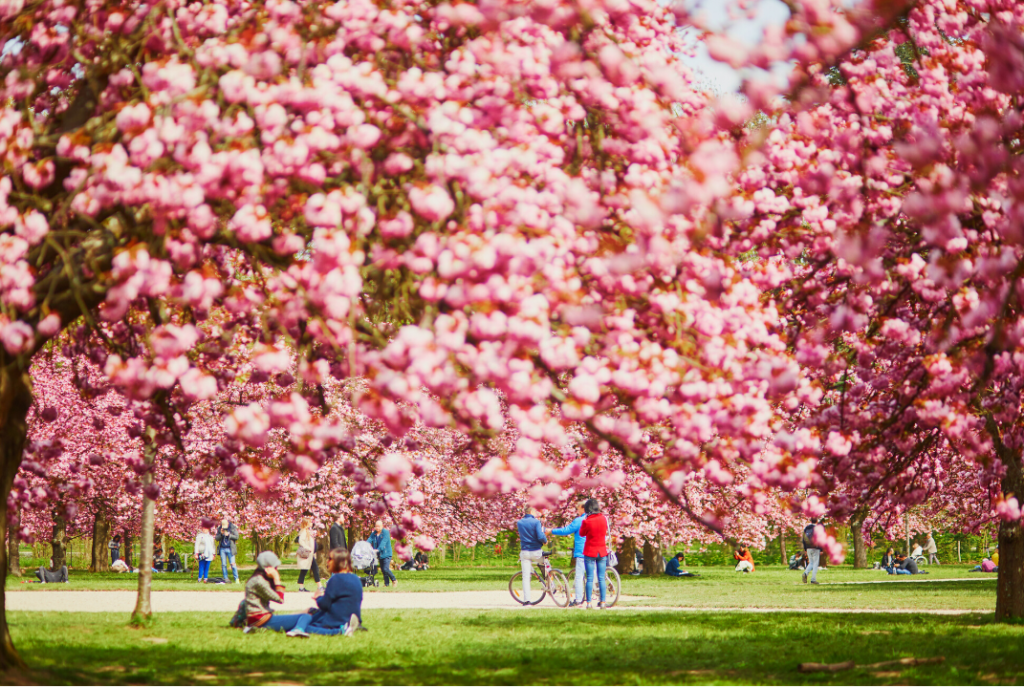
Parc des Sceaux. An exquisite seventeenth-century chateau — now the Museum of the Île-de-France — is surrounded by landscaped grounds originally designed by André Le Nôtre (of Versailles fame). There’s so much to admire in the immaculate French gardens (ponds, parterres, topiairies …) but when the orchard of Kanzans is in full pink flower you’ll really feel like you’re in a fairytale. Pack a picnic basket and plan to settle in for a heart-stirring, soul-soaring kind of experience. (The domaine is situated about ten kilometres to the south of Paris; to get here, take the RER B line, making sure your ticket extends to Zone 3, and hop off at either Parc de Sceaux or Sceaux station.)
FRESH CHERRIES
Cherries are not grown in or near Paris anymore — most are cultivated in the more temperate south. They tend to start reaching Parisian markets from early April. The unofficial start of fruit’s season is when the Élysée Palace is sent the first crate of cherries from Céret, down by the Spanish border — a tradition since 1932.

Most French cherries are Bigarreaux, which are the sweet ones; of these, the dark-red Burlat are the most popular. If you’re in Paris in cherry season, make sure to treat yourself to a few punnets. Here’s where you’ll find some of the best cherries around …
- Marché Président Wilson (Avenue de Président Wilson, 75116; Wednesday 7am-2.30pm, Saturday 7am-3pm).
- Marché Bastille (Boulevard Richard-Lenoir, 75011; Sunday 7am-3pm, Thursday 7am-2.30pm).
- Marché Biologique Raspail (Boulevard Raspail, 75006; Sunday 9am-3pm). A traditional open-air market, like the above two, but filled with only organic goodness.
- Rue Mouffetard (75005) — the historic market street (and former food haunt of the Hemingways) — extends into Marché Monge on Wednesday, Friday and Sunday mornings.
- Rue de Cler (75007) and Rue Montorgueil (75002) are, like Rue Mouffetard, old market streets slowly-but-surely morphing into café and restaurant strips, but they still serve up some great fresh produce.
- La Grande Épicierie de Paris (38 Rue de Sèvres, 75007). Lavished over the ground floor of Le Bon Marché, this is just about the ritziest grocery store your eyes will ever have the pleasure to witness.
CHERRY FEASTS & TREATS

Le Temps des Cerises (31 Rue de la Cerisaie 75004). Nestled in an adorable eighteenth-century maisonette on the street named after the old royal cherry orchard, it’s only fitting to start a meal here with a cherry-flavoured kir royale. As you do, nibble on the complimentary salted radishes, a lovely old-school way to whet your appetite for the traditional French food served up in this cosy bistrot you’ll wish was your local. A nice post-dinner touch: a gift of a bonbon — flavoured cherry, naturellement.
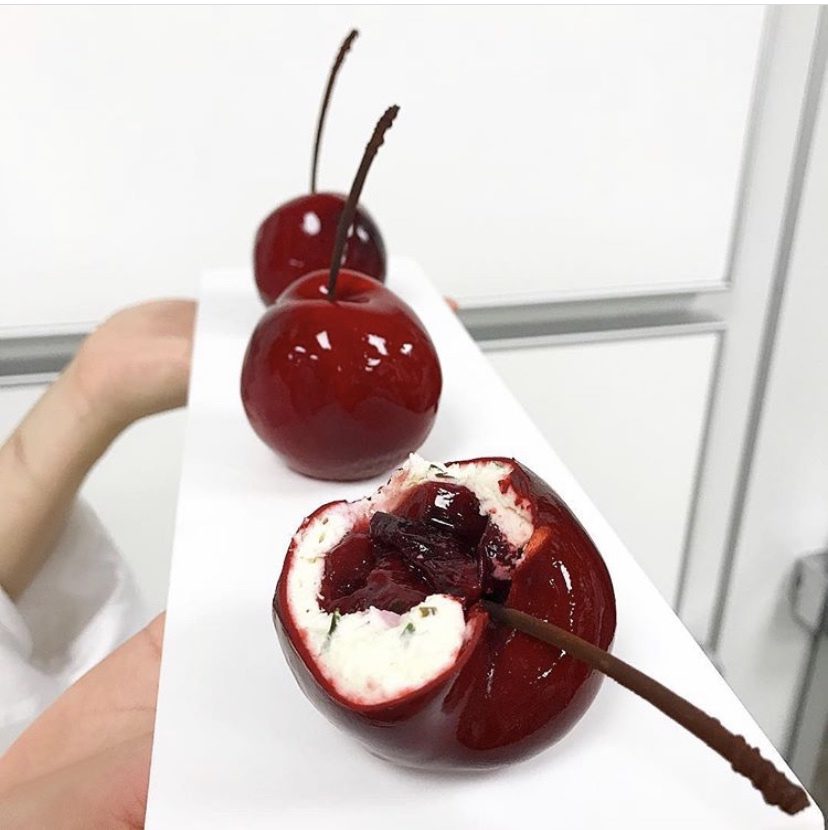
Cédric Grolet (6 Rue de Castiglione, 75001; Tuesday to Sunday, from midday). If you’re lucky, one of this globally lauded pastry star’s signature ‘sculpted fruits’ will be in the form of a cherry — a ruby-lacquered chocolare shell that cracks open to reveal a mind-blowing mix of cream, ganache and compote. Or you could chance upon a freshly minted tarte aux cerises, one of the most tantalising fruit tarts in town.

Mariage Frères (numerous locations, including 30 Rue du Bourg Tibourg, 75004). There are several cherry-blossom blends on the vast tea menu. While you’re there, pick up a packet of sakura- and green-tea-infused Tea Sablés (shortbread biscuits).
Hugo & Victor (40 Boulevard Raspail, 75007). Black cherry and Amarena marmalade macaron? Oui, please!
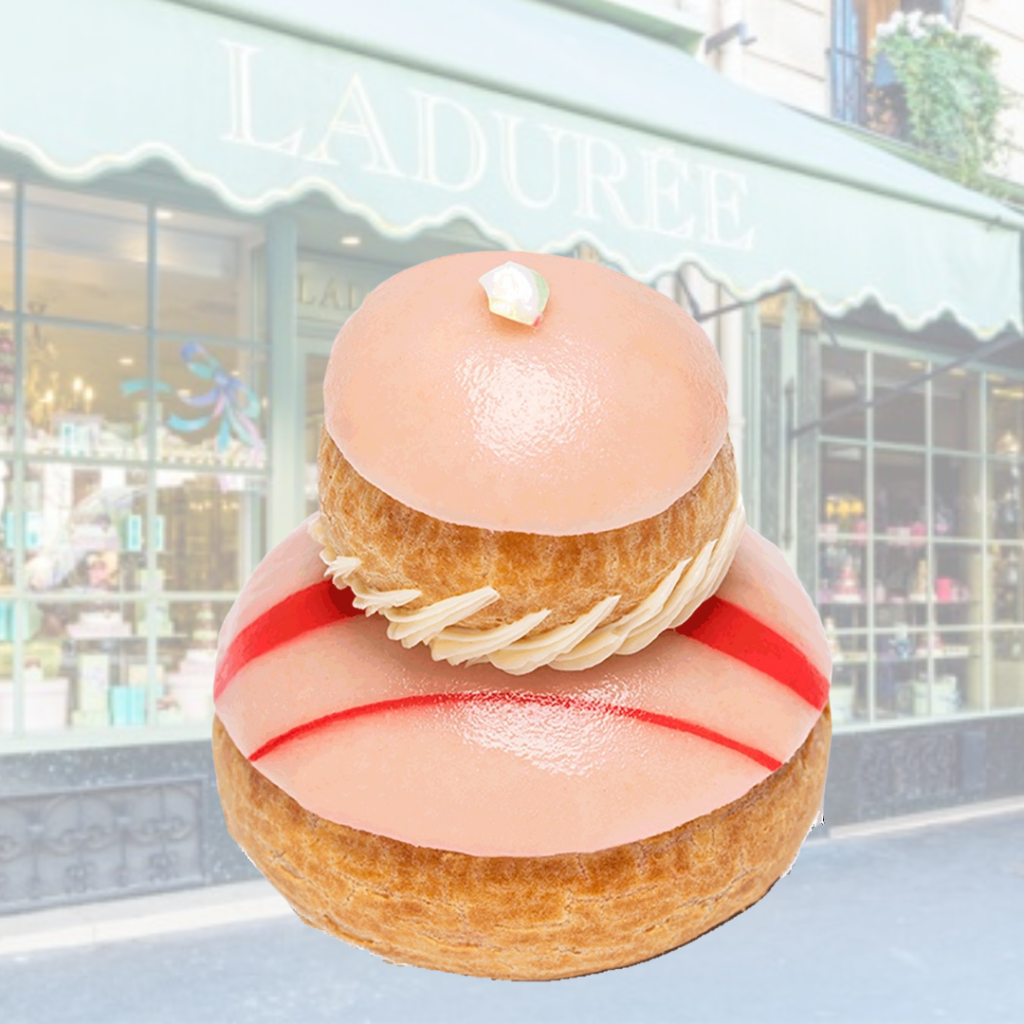
Ladurée (numeroius locations, including the orignal: 16 Rue Royale, 75008). The signature classic sweet, the Religieuse, currently comes in a ‘Candy’ option — think cream, morello cherry confit and semi-candied morello cherries, all encased in a pink-marzipan-coated choux confection that almost looks too pretty to eat.
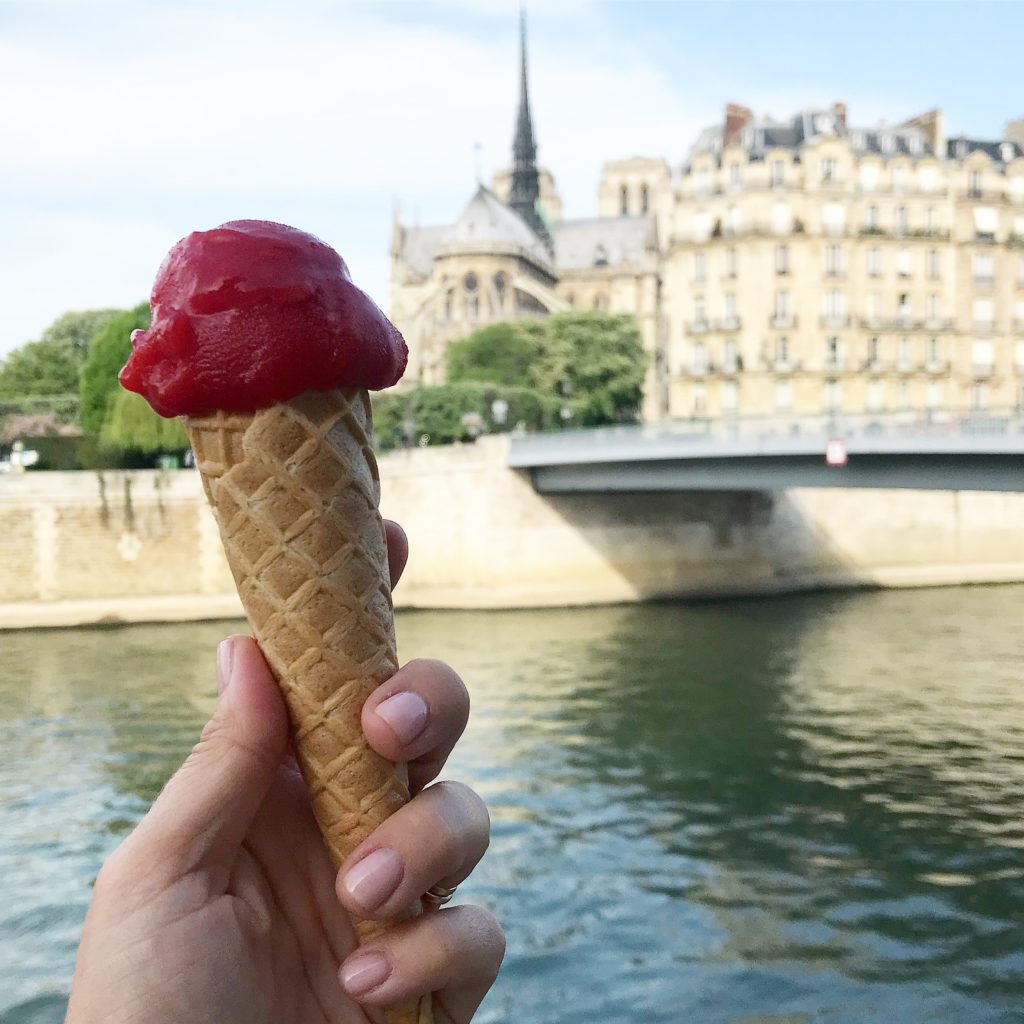
Berthillon (31 Rue Saint Louis en Îsle, 75004). The agony of choosing your parfums here is real, but you must try, at least once, the cerise or cerise noire sorbet. The purity of taste is simply perfection.
Mulot (76 Rue de Seine, 75006). Made with griottes — the sour cherries so well suited to cooking — this is thought by many to be the best cherry clafoutis in town. Available in mini and maxi sizes.

